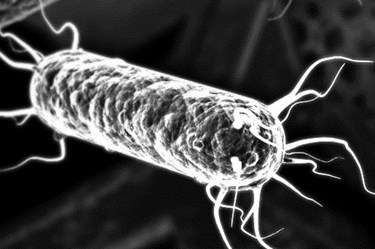Water Remediation 'Robots' Feast On Over 400 Wastewater Contaminants, Then Self-Destruct

By Laura Martin

Meet the BactoBots, the secret agents of wastewater treatment. These water remediation “robots” can destroy multiple enemies at once, survive extreme conditions, and self-destruct if things go wrong.
“These bots have proven to be little piranhas. They really just go in there and eat up everything that is available,” says Cody Harrison, the director of field engineering at Pilus Energy, a subsidiary of Bacterial Robotics, the company that created the BactoBots. “They can operate in anything from 5 to 50 degrees Celsius, are resistant to heavy metal poisoning, can withstand wide swings in pH, and are able to not only survive in the presence of other bacteria, but thrive.”
These BactoBots are genetically enhanced microorganisms, created using synthetic biology. They work like machines and are programed to perform specific tasks.
There are currently two types of BactoBots designed for use in municipal and industrial wastewater treatment facilities. The first, RemediBots, are added directly to wastewater, where they can quickly metabolize over 400 organic contaminants, including pathogenic bacteria.
GalvaniBots, the second type, provide equally thorough water remediation. They are paired with an electrogenic bioreactor to generate electricity and biogas. Research into exactly how much energy the GalvaniBots are capable of producing is still being conducted.
“You can set up the fuel cell as a circuit and use the bacteria to run it,” says Harrison. “The wastewater is run through the fuel cell and treated inside of it. Clean water comes out one end and energy out the other.”

Both types of BactoBots appeal to wastewater treatment operators because they can reduce levels of hydrogen sulfide, total chemical oxygen demand (COD), soluble COD, total suspended solids (TSS), total biochemical oxygen demand (BOD,) total organic (TOC), and more at the same time.
Because the technology behind BactoBots is cutting-edge, a security device has been built in to the process to avoid theft and duplication. A non-toxic, non-polluting, genetic rights management key must be added to the wastewater prior to BactoBot use. BactoBots are programed to recognize this key, and if it isn’t present they will self-destruct. This system also provides a level of security against accidental release into the environment.
“The idea there is to help curb people’s fear of genetically modified organisms,” says Harrison. “Even though they are safe, people have concerns with things they can’t understand, especially things that are microscopic that they can’t see.”
A patent for BactoBots was awarded in January 2013, but the technology is not yet available as a commercial product. A large-scale pilot program with the Metropolitan Sewer District of Greater Cincinnati is planned as soon as funding can be raised. Prior testing was conducted using wastewater from Anheuser-Busch.
“We are halfway to the $1.6 million we'll need to complete a large-scale pilot test,” says Harrison. “Once we get started, the entire thing will take roughly 18 months.”
Harrison sees a lot of potential for BactoBot technology. He feels it is ideal for cleaning water quickly and efficiently in countries with extremely polluted water systems or little wastewater treatment infrastructure. The company plans to eventually train scientists and engineers in the developing world to create BactoBots.
Other purposes for BactoBots are currently being explored, including using them to clean wastewater generated by nuclear energy production.
“I am really interested to see how this bacteria can survive and the limits we can push it to,” Harrison says. “It is all about finding out what might be possible. There is huge potential for improving health conditions.”
